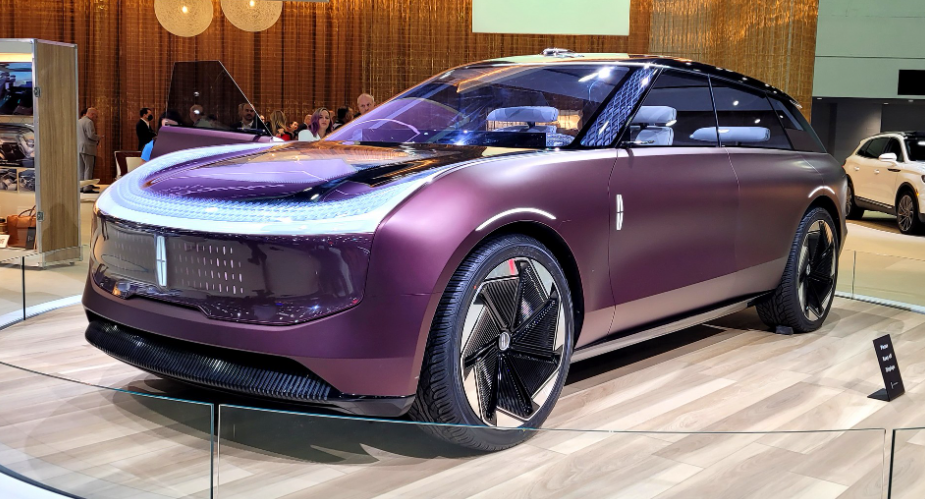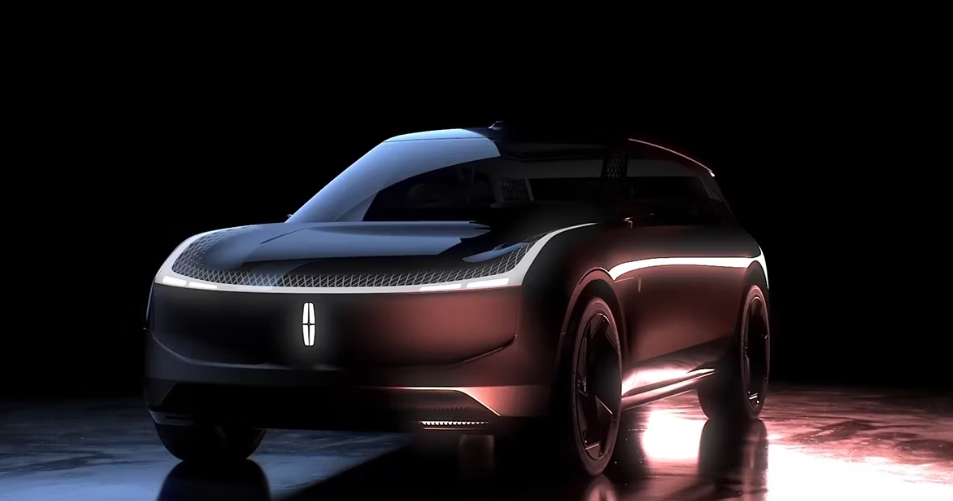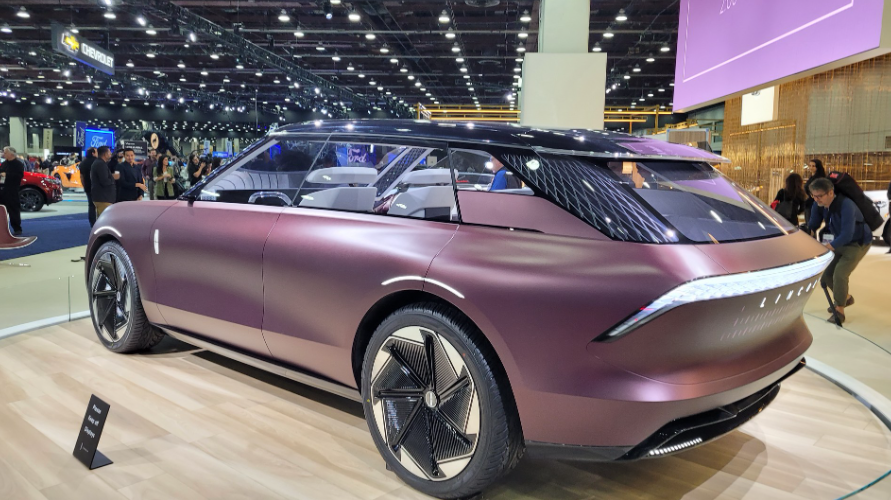Lincoln Aviator EVs are not a new thing. Ford confirmed that the model exists at the 2021 Capital Markets Day, which took place on May 26, 2020. Ford has not yet revealed its SOP or release date, but an Automotive News article dated October 2, 2020, suggests that these dates could be late 2024, or early 2025.

2025 Lincoln Aviator EV Changes
The Aviator electric, compared to the gas-powered Aviator could have a noticeably sleeker and contemporary design. Thanks to the space-efficient EV platform and the aerodynamic shape of the electric model, it could be lower and smaller without compromising cabin comfort. This design will likely be inspired by Lincoln Star Concept.
The SUV could have a massive grille enclosed, with the headlights positioned on top in an unusual position. The SUV could have smooth body panels, and wheels that are largely enclosed to enhance aerodynamics. The roof slope could be used to house a LiDAR at the front of the vehicle for its highly autonomous driving features.

Hau Thai Tang, former Ford Chief Product Platform and Operations Officer, stated at the 2021 Capital Markets Day, that a flexible rear-wheel-drive/all-wheel-drive BEV architecture will be used to underpin Lincoln Aviator EV. This is the same platform as the Star Concept. The platform is also suitable for SUVs with great driving dynamics and active lifestyles. It will also be suitable for rugged SUVs and cargo vans.
The Lincoln Aviator EV is likely to include active aerodynamics. This will give it a subtle style and the ability to adapt as driving conditions change. It could, for example, have a front grille that automatically opens and closes to allow air to enter when the drive system and braking system need cooling and to restrict it at other times to keep the drag as low as possible.
The Aviator EV may feature a bidirectional charger onboard that allows customers to use the stored energy in the battery pack for charging another EV, powering devices, tools, and appliances, and perhaps even supplying the grid. This feature is especially useful for powering homes during power failures and rescuing EVs that have depleted batteries.
Customers of the F-150 Lightning love their huge trunk, which makes it easy to load items. Ford could include this feature in the new platform that it’s developing for the Explorer EV and Aviator EV, as well as improve the space and functionality. Customers of the Aviator EV will be able to store two golf bags under the hood.
Aviator EV will also be able to receive OTA updates on its electronics and drive components. This allows customers to easily improve their driving experience, increase efficiency and many other factors, as well as add new features, all from the comfort of their own home, whenever a new update is released.
2025 Lincoln Aviator EV Pricing
Sales of the Lincoln Aviator dropped 9.3% in 2021 to 20,924 units. This is a decrease of 9,3% from the previous year (23,080). Sales in 2022 recovered, though, with a 5% increase year, reaching 21,977 vehicles. In Q1 of 2023, the Aviator was delivered to the U.S. in 5,236 units, 5.4% less than in Q1 of 2022 (4 967 units). The company will be looking to achieve stable growth with the arrival of an electric model.
Canadian Production
According to Automotive News, which was mentioned in the article’s introduction, Ford will produce the Aviator EV as well as the Explorer EV from the Oakville Assembly Plant located in Canada. Ford Edge and Lincoln Nautilus gas-powered models made in this factory may cease to exist within a few short years.

Ford will invest CAD 1.8 Billion (USD 1.35 Billion) to transform the Oakville Assembly Plant into a hub for high-volume EVs. The Oakville Electric Vehicle Complex will be the new name for the facility. Ford plans to begin retooling efforts and modernization in Q2 to follow out on next-generation electric cars in 2025. The EVs manufactured at this plant will include battery packs that are passion-site sites.
A new battery pack assembly plant will be built at the Oakville Electric Vehicle Complex. The facility covers an area of 407,000 sq. ft. BlueOval SK Battery Park in Glendale, Kentucky will supply the cells and arrays for the batteries. Ford confirmed it will bring seven EVs and invest USD 1.8 billion in this Canadian plant by 2027. The company plans to produce approximately 100,000 units per year of both the Explorer EV & Aviator EV. LMC Automotive, a sales, prod, auction,n and powertrain forecasting company, expects that the factory will have an EV production capability of around 200,000 units per year.
Lincoln aims at converting half of the global sales into ZEVs before the end of the decade. It also plans to electrify the entire lineup by 2030. The company plans to unveil three electric cars by 2025, and a fourth by 2026. On January 10, 2023, citing an AutoForecastSolutions document consisting of a well-researched product roadmap, Ford Authority reported that the next-gen Lincoln Aviator will be an electric vehicle by default. This speculation is based upon the fact that the plan does not mention a new-generation ICE Lincoln Aviator. Ford Authority points out that other sources had previously said an all-new ICE Lincoln Aviator would likely debut in 2025.